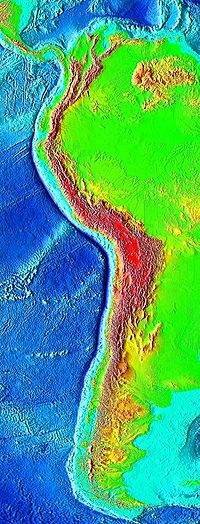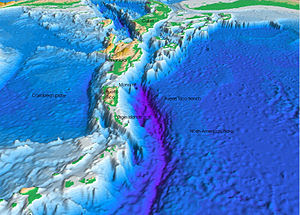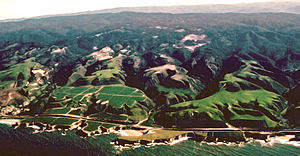 |
| The Peru-Chile Trench |
Major Pacific trenches
1.Kermadec
2.Tonga
3.Bougainville
4.Mariana
5.Izu-Ogasawara
6.Japan
7.Kuril-Kamchatka
8.Aleutian
9.Middle America
10.Peru -chile
Fracture Zones
11.Mendocino
12.Murray
13.Molokai
14.Clarion
15.Clipperton
16.Challenger
17.Eltanin
18.Udintsev
19.East Pacific Rise (S-shaped)
20.Nazca Ridge
- The oceanic trenches are hemispheric-long scale but narrow topographic depressions of the sea floor.
- They are also the deepest parts of the ocean floor.
- Oceanic trenches are a distinctive morphological feature of convergent plate boundaries.
- Plates move together few mm to over ten cm per year.
- A trench marks the position at the flexed.
- subducting slab begins to descend beneath another lithospheric slab.
- Trenches are generally parallel to avolcanic island arc.
- Typically extend 3 -4 km.
 |
| Location of the Mariana Trench |
- The greatest ocean depth is in the Challenger Deep of the Mariana Trench.
- Depth of 10,911 m below sea level.
- Oceanic lithosphere moves into trenches at a global rate of about
 .
.
- Trenches are sometimes buried and lack bathy metric expression.
- Trenches along with volcanic arcs and zones of earthquakes.
- There are several factors that control the depth of trenches;
-supply of sediment
-age of the lithosphere at the time of subduction.
- Relative depth may be controlled by ;
the age of the lithosphere at the trench
the convergence rate
the dip of the subducted slab at intermediate depths
- Narrow slabs can sink and roll back more rapidly than broad plates.
 |
| The Puerto Rico Trench |

















.jpg)

.jpg)



.jpg)





